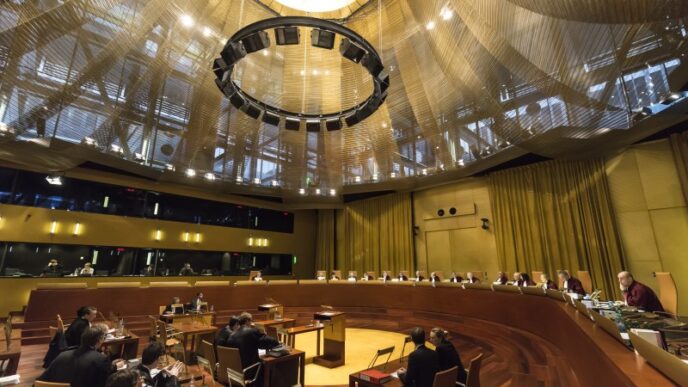As the global construction industry faces increased demand for infrastructure development, companies are under pressure to expand into international markets. However, many struggle with regulatory hurdles, economic instability, and cultural differences that can derail even the most promising ventures. This challenge is particularly evident in high-growth regions like Asia, the Middle East, and the U.S., where construction companies are racing to capture a share of the $94 trillion global infrastructure investment projected by 2040, according to the Global Infrastructure Hub.
Ilyas Taltakov, a strategic investment expert with extensive experience in leading international market entries, has successfully navigated these challenges in multiple regions. Drawing from his experiences, Taltakov is sharing insights into how companies can tackle similar challenges and achieve sustainable growth in international markets.
“Every market has its own unique barriers, and companies need a tailored strategy to succeed,” Taltakov explains. “In Qatar, we had to work closely with local firms to understand the regulatory environment, which allowed us to avoid costly delays and secure approvals much faster.” His hands-on approach to solving regulatory and market entry problems makes him uniquely qualified to offer guidance on how companies can navigate today’s complex global construction landscape.
The first challenge any company faces when expanding internationally is understanding the local regulatory framework. As Taltakov notes, this is not a one-size-fits-all situation. “Each country has its own regulations, and what works in one region may not apply in another. In Japan, for example, zoning laws are incredibly strict, while Southeast Asia has looser, but riskier, regulatory environments.”
Taltakov’s solution to this challenge often involves forming strategic partnerships with local firms, a tactic that proved essential during his company’s expansion into Qatar. China State Construction Engineering Corporation (CSCEC) followed a similar approach when expanding into Africa, aligning with local governments to streamline approvals and maintain compliance with local laws.
“In Qatar, the partnership model not only helped us navigate regulations, but also allowed us to secure valuable government contracts,” Taltakov says. This proactive approach to regulatory challenges has become a key best practice for construction firms aiming to expand globally.
Another critical element of international expansion is cultural alignment. What works in one market may not resonate in another, and failing to account for these differences can lead to miscommunications or even project failure. Skanska, a Swedish construction giant, experienced this firsthand during their U.S. expansion, where they had to adjust their management style to align with local business practices.
Taltakov stresses the importance of cultural adaptation. “You need to adapt to the local business culture if you want your projects to succeed,” he explains. “In Ukraine, where personal relationships are key, we had to adjust our engagement strategies to build trust with clients and partners, which was very different from how we operated in the CIS.”
This ability to adapt quickly to new cultural environments has allowed Taltakov’s projects to flourish, particularly in regions like the U.S., where cultural differences can significantly impact project outcomes.
Aside from regulatory and cultural challenges, understanding economic indicators is crucial to making informed market entry decisions. Factors such as GDP growth, real estate demand, and employment trends play a significant role in determining which markets are ripe for expansion. In the post-pandemic world, regions like India have seen a construction boom driven by urbanization and infrastructure investments.
Taltakov leveraged these economic insights during his expansion into Florida. “Florida’s urbanization and growing population created a significant need for infrastructure development,” he recalls. “We identified this opportunity early on and were able to position ourselves in the market before it became too competitive.” His ability to analyze regional economic trends has been key to his success in expanding operations internationally.
Drawing from his experiences, several best practices have emerged for construction companies looking to expand into new markets. Taltakov emphasizes the importance of forming local partnerships to gain faster regulatory approvals and smoother market entry. “Local partnerships are essential. They provide the local expertise and connections you need to succeed in complex markets,” he says.
Conducting deep market research is also critical. General economic reports only offer a surface-level view; companies must go deeper to understand local competition, demand, and market-specific risks. “You need to get on the ground and understand the unique challenges of each market. It’s not enough to rely on general data,” Taltakov advises.
Lastly, compliance with local regulations from the start is non-negotiable. “The cost of non-compliance can be steep,” he warns. “Companies need to prioritize understanding the regulatory landscape to avoid expensive delays.”
With global infrastructure demand continuing to rise, international expansion offers construction companies enormous potential for growth—but only if they navigate the regulatory, cultural, and economic challenges effectively. Through his work in markets like Qatar, Ukraine, and the U.S., Ilyas Taltakov has developed a strategy that addresses these challenges head-on, offering companies a roadmap for success.
“Expanding internationally is about more than just entering new markets; it’s about understanding the unique aspects of each one and tailoring your strategy accordingly,” Taltakov concludes. With a focus on adaptability, deep market research, and strategic partnerships, companies can thrive in the increasingly competitive global construction industry.














